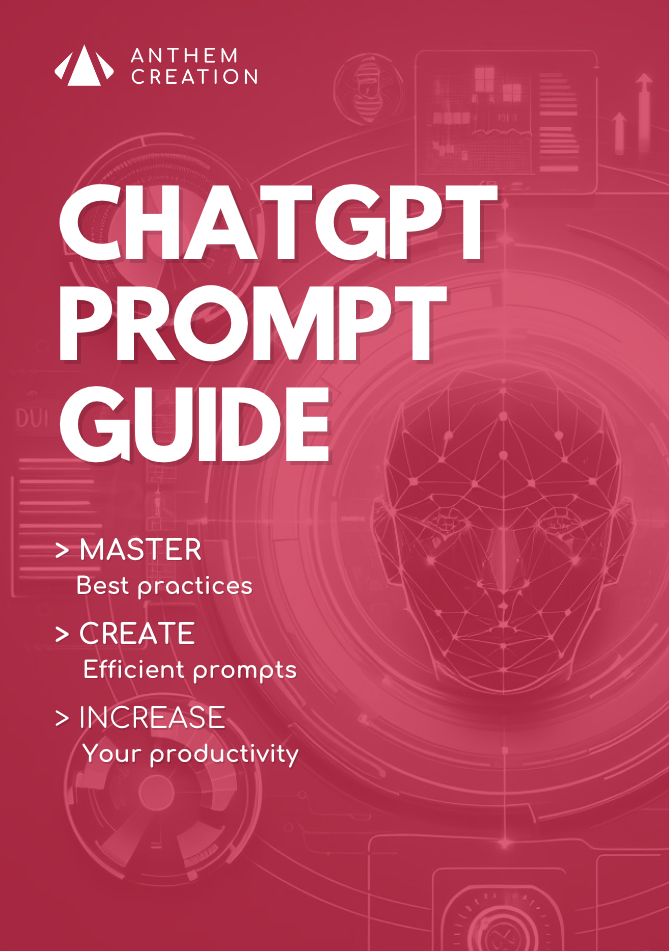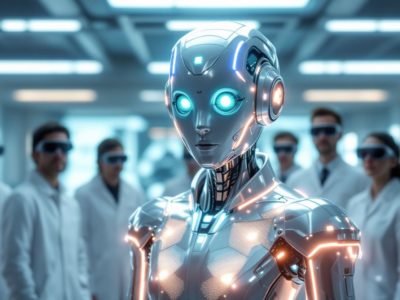OpenAI turns our conception of AI on its head with new models that no longer simply generate text, but think, reason and self-correct like never before.
GPT-o3: When AI finally learns to think before it speaks
Revealed in December 2024, GPT-o3 is no mere evolution – it’s a fundamental revolution in artificial reasoning. What sets this model apart from all its predecessors is its ability to develop a genuine structured “thought” before formulating its answers.

An invisible but powerful thought process
GPT-o3 introduces a revolutionary “private reasoning chain” mechanism: before responding to you, the model elaborates a complete reasoning process, invisible to the user, where it methodically plans its response and checks the consistency of its reasoning itself.
True intelligence lies not in the ability to respond quickly, but in the ability to structure one’s thinking to reach the right answer.
This deliberative approach enables GPT-o3 to excel particularly on tasks requiring multiple stages of reasoning or the integration of information from a variety of domains. For example, the model can now solve complex mathematical problems by breaking down its reasoning step by step, just as a human mathematician would.
The vision that nourishes thought
One of GPT-o3’s major innovations is its ability to integrate images directly into its chain of thought. Unlike previous models that treated images as mere inputs, GPT-o3 can analyze visual content and incorporate it into its thought process.
This native multimodality gives it a deep visual understanding, making it particularly powerful for tasks such as analyzing scientific graphs, interpreting technical diagrams or solving problems presented in visual form. To delve deeper into this fascinating subject, check out our detailed analysis on how OpenAI brings us closer to general artificial intelligence.
Performance that redefines the state of the art
Benchmarks performed on GPT-o3 show astounding results that testify to a real breakthrough:
- Advanced Mathematics: Score of 96.7% on the AIME 2024 (American Invitational Mathematics Examination), crushing GPT-4’s 64.5% on the same test.
- Programming and debugging: 71.7% on SWE-bench Verified, a benchmark that measures the ability to resolve real-life bugs in GitHub codebases – a 20-point jump on the previous generation.
- High-level science: 87.7% on GPQA Diamond, a set of PhD-level science questions.
- Contextual analysis capability: A context window extended to 200,000 tokens, compared with 128,000 for GPT-4.
But perhaps the most telling figure is its score of 87.5% on the ARC-AGI benchmark (a measure of general artificial intelligence), surpassing the human level by 85% and tripling the performance of the o1 generation.
This result suggests that we are approaching a decisive stage in the development of general artificial intelligence.
A wizard augmented by tools
GPT-o3 natively integrates all ChatGPT tools (web browsing, image generation, Python code execution…) and can use them autonomously. The model understands when and how to deploy these tools to augment its capabilities, without requiring explicit instructions.
For users, the “Think” function offers a glimpse of this advanced reasoning, even on the free version, although full capabilities are reserved for professional subscriptions.
o4-mini and o4-mini-high: power accessible to all
Aware that not all uses require the maximum power of its premium models, OpenAI has simultaneously unveiled two models derived from its fourth generation: o4-mini and o4-mini-high. These models represent a strategic democratization of AI reasoning, offering an optimal balance between performance, cost and accessibility.
The intelligent compromise
o4-mini is designed to be significantly faster and more economical than its big brothers, while retaining outstanding quality:
- Speed/cost balance: Optimized performance for API integrations, SaaS platforms and large-scale use.
- Multi-domain versatility: Strong skills in mathematics, programming and computer vision.
- Extended context: 128,000 token window, enabling analysis of large documents.
- Native multi-modality: Smooth handling of text and images, with planned extensions to video and audio.
To understand in detail the differences between these models, I invite you to explore our complete comparison between GPT-4o and GPT-4o mini, which offers a detailed analysis of performance and use cases.
A security rethink from top to bottom
o4-mini also introduces a major security innovation with the “instruction hierarchy” system. This mechanism considerably strengthens resistance to attempts to manipulate or hijack the model (jailbreaking), while preserving its flexibility and usefulness.
This breakthrough addresses growing concerns about the safety of generative AI and should set a new standard in the industry.
Practical applications
These advances open up a vastly expanded field of possibilities for professional and consumer applications:
Enhanced scientific research
GPT-o3 particularly excels in complex scientific analysis, now capable of:
- Formulate coherent hypotheses and test them via elaborate reasoning
- Modeling phenomena by integrating multidisciplinary data
- Synthesizing the scientific literature with a thorough understanding of nuances
- Collaborating with researchers on unsolved problems
Several prestigious laboratories such as DeepMind Healthcare and Calico Labs are already exploring the integration of these models into their research workflows, particularly in fields such as drug discovery or theoretical physics.
Transformed software development
GPT-o3’s debugging and programming capabilities radically transform software development:
- Identification and correction of complex bugs in large code bases
- Optimized code generation with explanatory comments
- Automated code review with architectural improvement suggestions
- Learning support for junior developers
To explore further how these models are revolutionizing software development, check out our detailed analysis on how o3-mini pushes the boundaries of development and reasoning.
Contextualized artificial vision
GPT-o3’s ability to integrate visual reasoning opens up new horizons:
- Intelligent document analysis (contracts, reports, scientific literature)
- Interpretation of complex visual data (medical imaging, technical graphics)
- Creation of coherent multimodal content (presentations, illustrated reports)
- Improved accessibility for the visually impaired
Are we at the gates of AGI?
GPT-o3 and o4-mini are not simply incremental improvements: they potentially represent a decisive turning point in the evolution of AI. The 87.5% score on the ARC-AGI benchmark, exceeding the average human level, raises fundamental questions about how close we are to general artificial intelligence (AGI).
We may be witnessing the first signs of a machine intelligence capable not just of imitating, but of truly understanding and reasoning about the world around it.
The introduction of these models marks a crucial step in this quest: for the first time, we have AIs capable of breaking down complex problems, developing strategies for solving them and checking their own reasoning – skills previously considered exclusively human.
As researchers continue to explore the limits of these new models, one thing is certain: the era of AI that “thinks before it speaks” is officially upon us, and with it opens a whole new chapter in our relationship with intelligent machines.
And what do you think? Do these advances really bring us closer to AGI, or do they simply represent a significant improvement on existing systems? Share your opinion in the comments!
AI NEWSLETTER
Stay on top of AI with our Newsletter
Every month, AI news and our latest articles, delivered straight to your inbox.

CHATGPT prompt guide (EDITION 2024)
Download our free PDF guide to crafting effective prompts with ChatGPT.
Designed for beginners, it provides you with the knowledge needed to structure your prompts and boost your productivity
With this ebook, you will:
✔ Master Best Practices
Understand how to structure your queries to get clear and precise answers.
✔ Create Effective Prompts
The rules for formulating your questions to receive the best possible responses.
✔ Boost Your Productivity
Simplify your daily tasks by leveraging ChatGPT’s features.
Similar posts
How OpenAI’s o3-mini model pushes the limits of development and reasoning
Recently, OpenAI unveiled the o3-mini model , a more compact, fast and economical version of its reasoning tools. Designed to meet the demands of STEM (science, technology, engineering and mathematics) …
OpenAI O3 and O3 mini : Towards artificial general intelligence
OpenAI has revealed two revolutionary new artificial intelligence models, O3 and O3 mini, which mark a major turning point in the quest for general artificial intelligence (AGI). These models, with …
OpenAI GPT-4.5 : Artificial intelligence that understands your emotions
OpenAI has just struck a major blow with the launch of GPT-4.5. This new language model, unveiled on February 27, 2025, marks a turning point in OpenAI’s approach with its …


